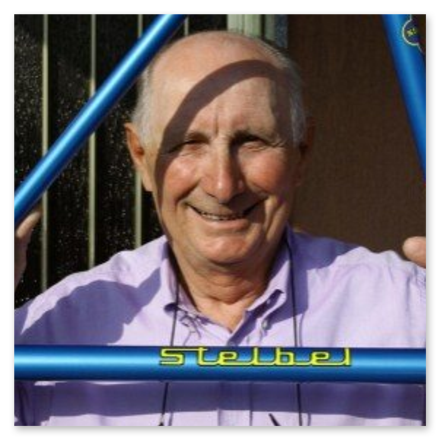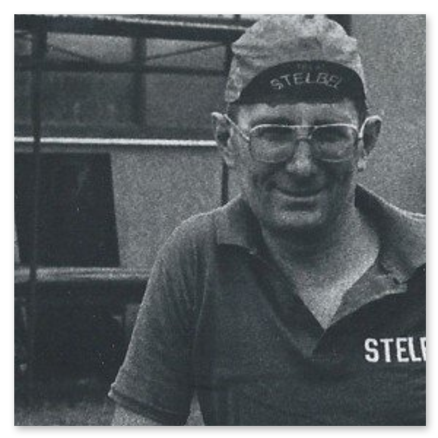Storia di Stelbel
Storia di Stelbel
Storia di Stelbel

Stelbel (acronimo di Stelio Belletti) è un marchio italiano di telai per biciclette da corsa. A partire dal secondo dopoguerra Stelio Belletti affianca il padre Antenore nell'officina di famiglia di Rodano, nel quartiere Ortica a Milano in via Giovanni Antonio Amadeo. L'attività era specializzata nel settore meccanico della costruzioni di telai e strutture in tubazioni metalliche. L'Officina Belletti durante gli anni 50 e 60 vanta collaborazioni di rilievo con importanti aziende italiane del settore aeronautico soprattutto con la Società italiana Ernesto Breda per la quale viene svolta l'attività di costruzione e riparazione di fusoliere in tubolari d'acciaio, con la società dei Fratelli Nardi , con a Caproni di Taliedo e già negli anni 50 inizia il rapporto con l’ Aviamilano di Mario Vietri soprattutto per la costruzione di prototipi. Stelbel realizzò anche telai in campo motociclistico, infatti produsse i telai per la Paton negli anni 60 e nel 1967 addirittura un telaio per la Honda del pilota Mike Hailwood, ma dopo la vittoria in una gara minore la Honda ne vietò l’utilizzo. Stelio Belletti da sempre appassionato di ciclismo a partire dai primi anni 70, corse in competizioni locali e amatoriali con ottimi risultati. Dall'insoddisfazione nei riguardi dell'ultima bicicletta da corsa acquistata, Stelio Belletti si cimentò nella costruzione di telai per bicicletta da competizione a partire dai primi anni 70. I risultati ottenuti lo incoraggiarono a fondare il marchio Stelbel nel 1973. L'artigiano fu il primo in Italia a realizzare telai per biciclette con la tecnica di saldatura TIG, imparata e affinata negli anni precedenti grazie al lavoro svolto nel settore aeronautico. Tubazioni e accessori furono opportunamente modificati, si adottarono soluzioni uniche per la costruzione, particolari del telaio vennero anche costruiti da zero, infatti è così che nacque il progetto della testa forcella auto-costruita, un elemento molto distintivo per ogni telaio, che da sempre accompagna la produzione Stelbel. Nel 1975 Stelio Belletti brevettò il primo telaio saldato con tecnica di saldatura TIG in Italia e nello stesso anno la nazionale polacca, che correva con biciclette Stelbel, vinse la medaglia d'oro ai campionati del mondo di Mettet nella prova a cronometro a squadre. Stelio fu anche fra i primi ad introdurre forcellini posteriori verticali, già a partire dal 1977. A Stelio Belletti va il merito di aver sempre sperimentato soluzioni particolari per la costruzioni di telai per ciclo. Si ricorda ad esempio che fu tra i primi costruttori a realizzare telai in acciaio inossidabile. Ed ad aver utilizzato tubazioni non convenzionali, tubi oversize e tubazioni di forme non circolari. L'attività dell'officina continuò ininterrottamente fino al 1990, anno di chiusura della stessa. L’officina sempre a nome Stelbel è stata riaperta nel 2013 e continua la produzione di biciclette in acciaio speciali.

Stelbel (acronym for Stelio Belletti) is an Italian brand of racing bicycle frames. Starting after the Second World War, Stelio Belletti joined his father Antenore in the family workshop of Rodano, in the Ortica district in Milan in via Giovanni Antonio Amadeo. The activity was specialized in the mechanical sector of the construction of frames and structures in metal pipes. During the 50s and 60s, Officina Belletti boasts important collaborations with important Italian companies in the aeronautical sector, especially with the Italian company Ernesto Breda for which the construction and repair of fuselages in tubular steel is carried out, with the company of the Nardi Brothers, with a Caproni di Taliedo and already in the 50s the relationship with Mario Vietri's Aviamilano begins, above all for the construction of prototypes. Stelbel also made frames in the motorcycle field, in fact it produced the frames for the Paton in the 60s and in 1967 even a frame for the Honda of the pilot Mike Hailwood, but after the victory in a minor race Honda prohibited its use. Stelio Belletti has always been passionate about cycling since the early 70s, racing in local and amateur competitions with excellent results. Since his dissatisfaction with the last racing bicycle purchased, Stelio Belletti ventured into the construction of racing bicycle frames starting from the early 70s. The results obtained encouraged him to found the Stelbel brand in 1973. The craftsman was the first in Italy to make bicycle frames with the TIG welding technique, learned and refined in previous years thanks to the work done in the aeronautical sector. Pipes and accessories were suitably modified, unique construction solutions were adopted, details of the frame were also built from scratch, in fact this was how the project of the self-built fork head was born, a very distinctive element for each frame, which has always accompanied the Stelbel production. In 1975 Stelio Belletti patented the first frame welded with TIG welding technique in Italy and in the same year the Polish national team, which ran with Stelbel bicycles, won the gold medal at the Mettet world championships in the team time trial. Stelio was also among the first to introduce vertical rear dropouts, as early as 1977. Stelio Belletti is credited with having always experimented with particular solutions for the construction of cycle frames. Remember, for example, that he was among the first manufacturers to make stainless steel frames. And to have used unconventional pipes, oversize pipes and pipes of non-circular shapes. The workshop's activity continued uninterruptedly until 1990, the year of its closure. The workshop always in the name of Stelbel was reopened in 2013 and continues the production of special steel bicycles.








